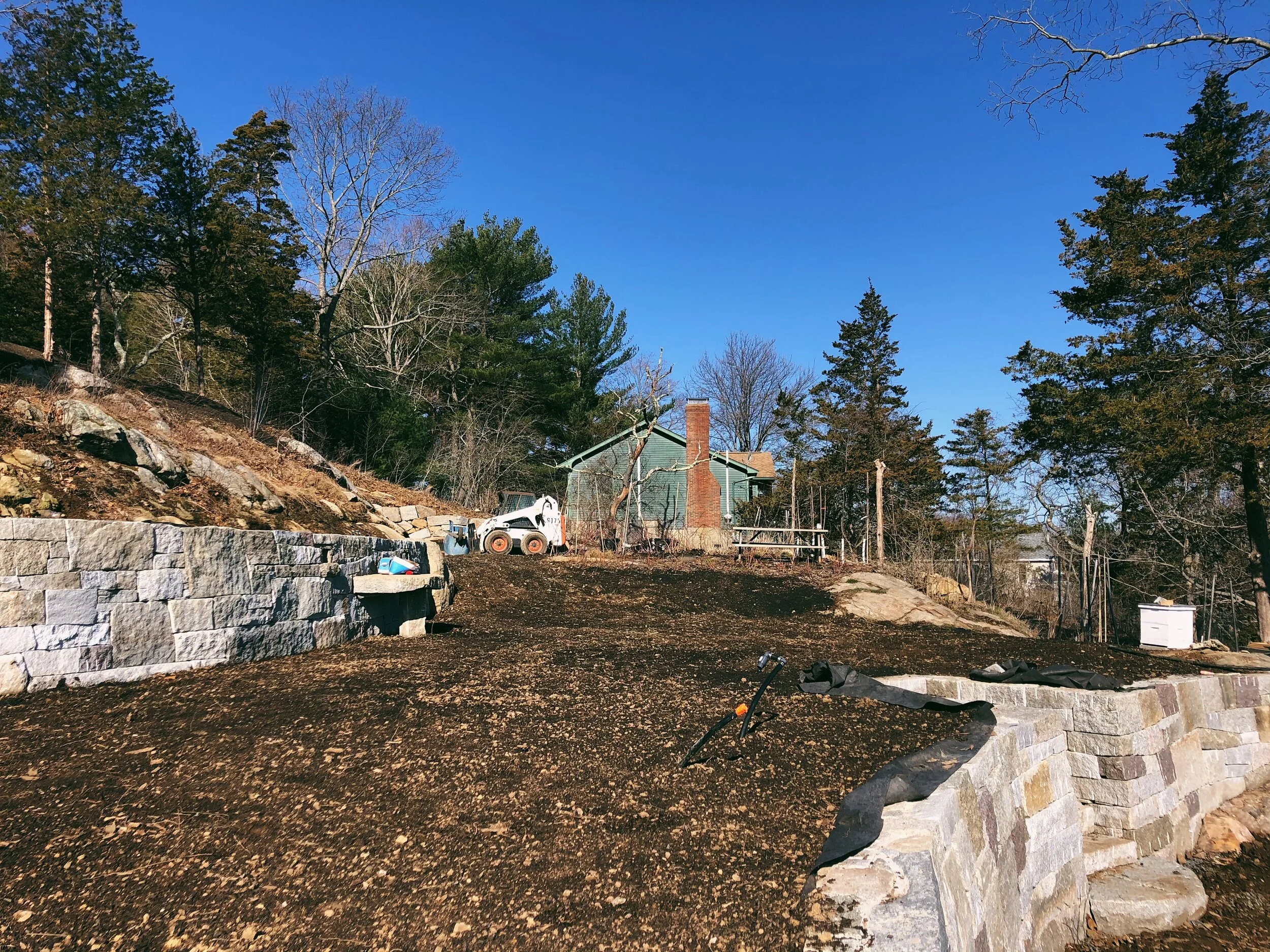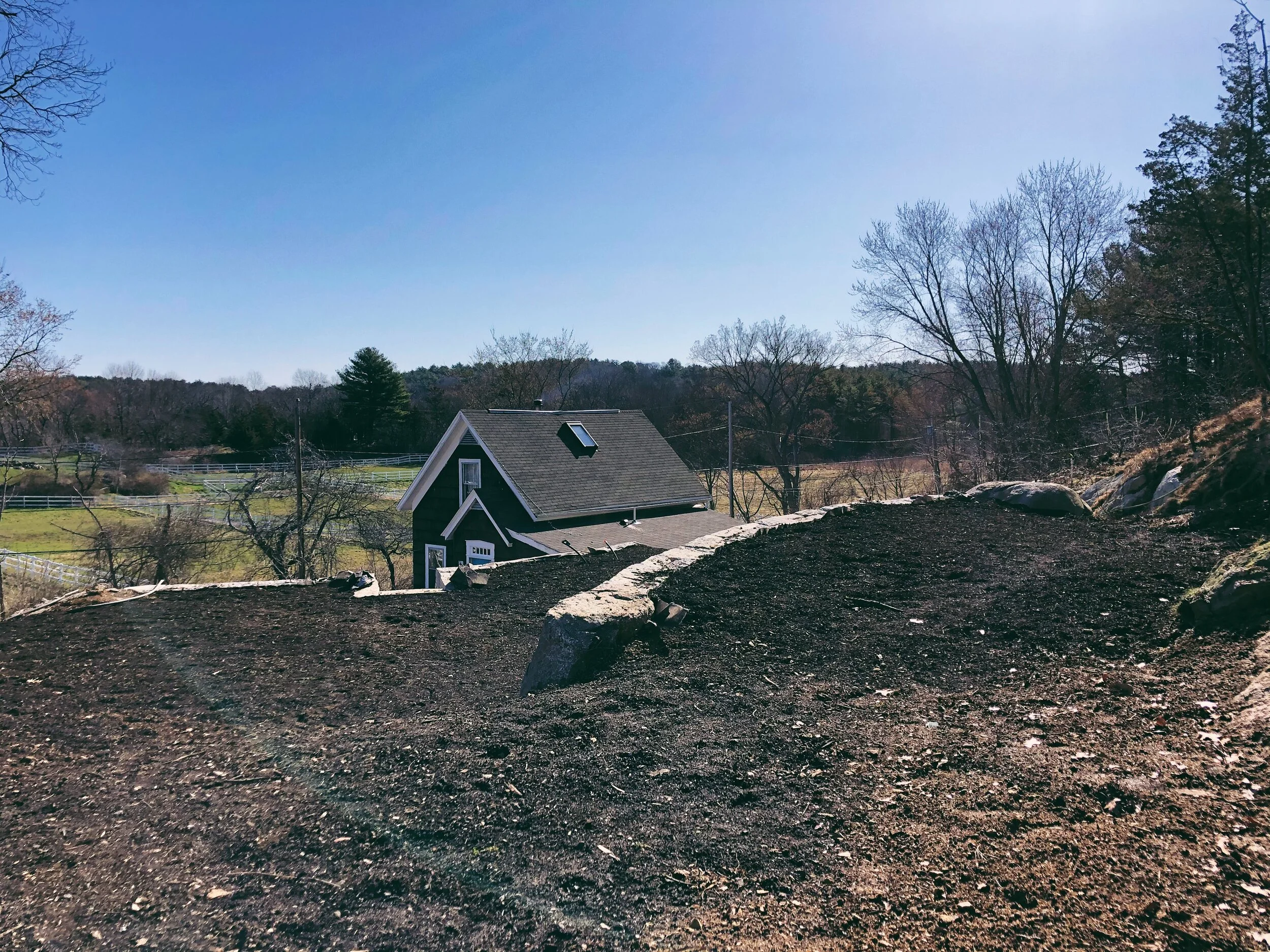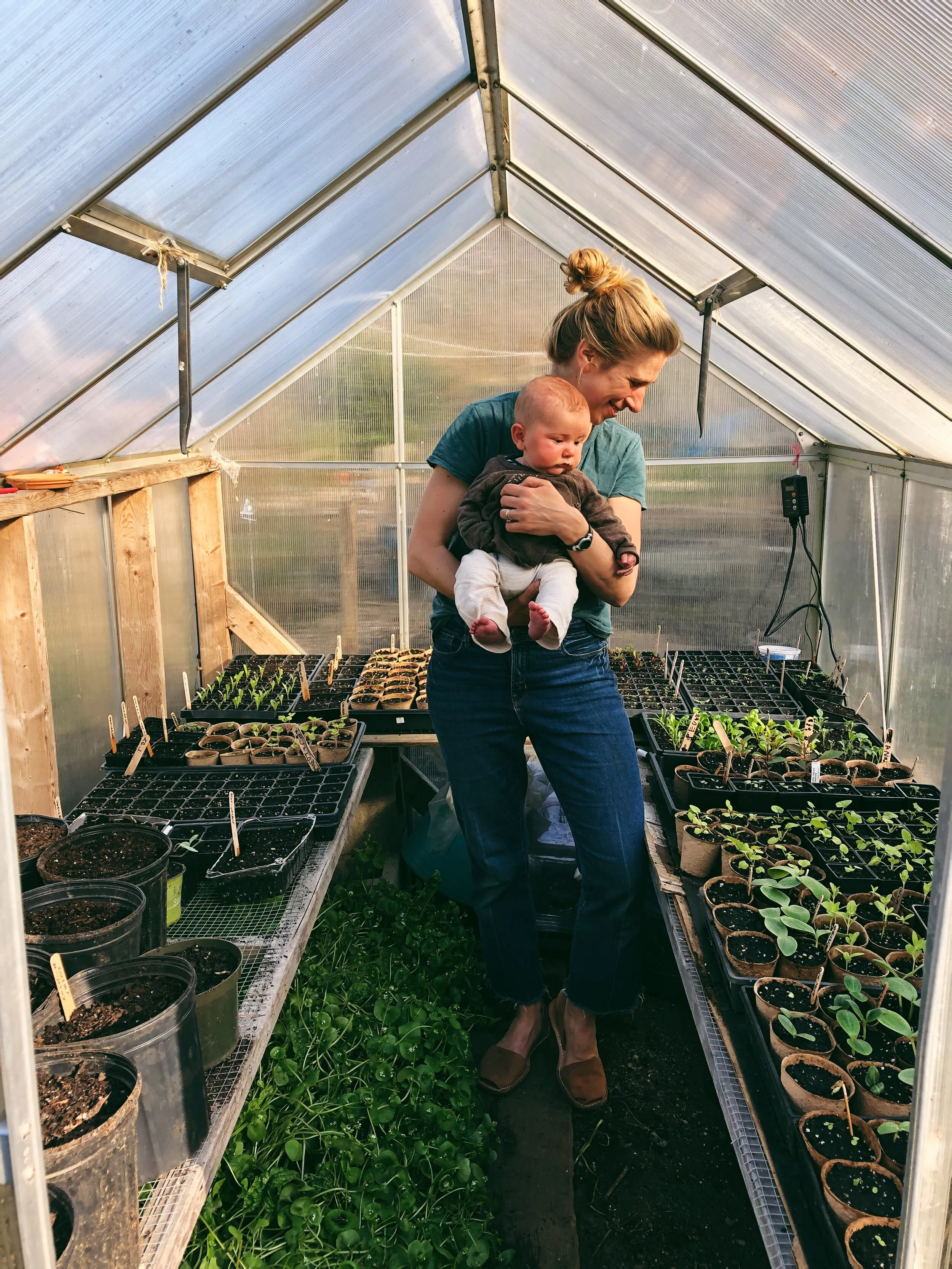April 2021
“When proud-pied April dress'd in all his trim
Hath put a spirit of youth in every thing”
William Shakespeare, Sonnet 98
April is a month of immense growth. At the beginning ,the world around us is still relatively brown, the grass is sodden underfoot and many branches are yet bare, but by the end, Spring is sweeping away all the grey and brown, replacing it with a bright new green punctuated with blooms.
April is also a month of busy busy work. Where there is much to do in the garden. And what’s more, things done at this time of year pay you tenfold, the plants simply love having the full season to grow.
As we begin April, our perennial beds are just waking up. I pull back the mulch here and there to take a peak and do a bit of pruning, cleaning up the sodden plant matter from last year. I see all sort of life unfurling, oregano is green under the mass of last years twigs, lemon balm and lemon sorrel are up in the garden, the bulbs are up, the snow drops are going out but there are still crocuses and the daffodils and tulips are about to grace the my garden. The rhubarb is just emerging, as are the peonies, the strawberries are sending out new green growth, there is so much anticipation in what is to come.
Early Spring Observations in the Garden
One thing that I continue to take note of in our own garden is that things tend to be a bit later here. We are situated on a steep northeast slope and the cold lingers here a bit longer and it takes a bit longer for the sun to reach the garden and wake up the plants. As I sit out in our front entry garden, I am paying particular attention to which beds are in full sun at this time of year so I can change my bulb plantings in the fall. While all the garden is full sun in the height of summer, this time of year there is more shade.
The other things this brings to mind is how in addition to the evergreens we have been adding, we need add a few other plants that can give us life earlier still, check out our plant spotlight to see a particular plant I hope to add for just this reason.
In process: Upper terraces. wall built, irrigation run but not finished, grading set, now ready for pathways, planting beds and plants.
Some jobs on our to do list in April.
We are wrapping up the big structural adjustments. Now that the walls are finished and the grades have been set, the access road repaired, we are ready to double dig the beds and replant all the perennials that I have over wintered, away from the construction. I divided the perennials as I dug them up last year, so we have a good stock of plants for planting out.
On two of the slopes we will be recreating the planting from last year, swaths of sedum autumn joy, echinacea, black eyed Susan, yarrow, lupine, etc. maybe adding a few grasses in as well, a constructed meadow of sorts.
We will be planting a boxwood hedge along the top of two walls that lead you into the upper annual garden and install a gate there. More fencing will be going in around those spaces as well. I have a lot of berry that had temporary homes over winter and will now be planting out in that garden space.
We have decided to put our greenhouse plans on hold, as we feel there is not time to construct it with all the other projects, this it is now on the bucket list for next spring, sigh…
Jobs for the garden this month.
Dividing Perennials
As your perennials come up in the garden, you may notice that some are very large clumps and are perhaps dying in the middle as the plant spreads, that tell tale sign mean you need to divide your plant. Now is a good time for many perennials to be divided (not grasses, wait until it is warmer). Use a good sharp transplanting shovel to get the plant up with a good root structure, and then decide how many times you will divide it. (Plants like Hosta, Sedums and Day Lillies can be divided many many times and will re grow fabulously) Just like pruning, you don’t want to hack away at the plant, but make strong, decisive, and clean cuts, think surgery again, which is why a sharp shovel is essential.
Fertilize Roses
This month is the time to feed your roses to help them grow strong and flower well. You want to wait until the leaves have opened but before they have fully opened, that way the nutrients will be available in the soil for the plants to take up. There are a number of organic rose feeds out there, one that I have not used but will try this year is Neptunes Harvest Rose and Flowering liquid fertilizer - this particular one is supposed to be used as the flower buds are forming, where you can use one of their other fertilizers as they begin to put on their leafy growth, I will be using their fish and seaweed blend in the next week or so.
Sow Seeds
According to my last frost date of May 16th, we are 6 weeks until last frost on Easter Sunday. If you haven’t sown seeds yet, don’t worry, there is still time, but you best get on it! It may be too late to sow peppers and eggplant, but you can always try, but most other things can still be started without much loss of time. So carve out some time this week and start sowing!
Peas
If you haven’t planted out your snap peas, then don’t wait, do it! I planted mine out last weekend, and it felt late to me with all the warm weather we have been having. Snap peas can be planted as soon as the soil can be worked, they love growing in cool conditions. I soak mine anywhere from 12-24 hrs before planting out to aid germination…I have planted them without soaking and had great results as well, so either way. I am also growing sweat peas this year, a knee high variety, those are growing in biodegradable paper pots right now, they like it cooler as well, but not cold, so right now they do a dance in and out of the greenhouse depending on the temperature.
Lettuces
Sow cool crop lettuces now, either direct seeding or in cells in a greenhouse for an early season crop. I sowed a variety called little gem. About three weeks ago I started bok choi and I just planted them out in the garden, it is ideal to sow greens in smaller amounts (the scale would depend on how much you and your family eat) every 3 weeks for a continual harvest. I will be sowing some cut and come again types and some Asian green varieties as well to get an early harvest while waiting for other things to come in. Radishes too, I hope to direct seed soon.
Clean up Perennial beds
As the new growth emerges, now is a great time to clear last years growth, we chop it up and add it to our compost pile along with leaves that have collected in corners around the garden. If you have a mower and it is a dry day and the materials are relatively dry, it is helpful to shred the material as it will break down fast in the compost pile. I like to wait until after I have planted things out to do a fresh layer of mulch, but it would also be perfectly fine to do so now and then just touch up as needed. Personally, I love using the terra mulch at brick ends and I do as heavy as a layer as I can.
Plant Potatoes
This year, we never got around to chitting the potatoes, perhaps we will do so now, perhaps we will go without. We have both chitted (the process of setting the potatoes on a sunny windowsill to cause it to bud out) and not and grown potatoes well enough either way, so I would say experiment yourself and see what works for you. But in either case, we will be planted them out this month, once we move all the perennials out of the beds where they will be planted. We plant them in rows and make a deep trench, for planting, the ideas is that as they grow, you keep mounding up until you have little potato hills, thus keep the tubers deep underground and away from any sunlight and increasing your yield.
Pruning
The window is rapidly closing on the ideal time to prune, if you haven’t done so I would recommend doing it soon or chalking it up to one of those tasks you just didn’t get to this year, and you know what, your garden will be lovely either way.
Bulbs
If like me you want to relocate daffodils, or divide snow drops, or do something with any other bulb for that matter, wait to lift them from the garden until they have finished flowering. Then you can dig them up, and you can do one of two things. If you have a location in mind, you can plant them out in the garden, cut back their faded flowers but leave their foliage so they will store energy in the bulb for next years bloom. For bulbs like snowdrops, you can divide these clumps to spread them over a larger area. When digging these up, do so carefully as to not damage the small bulbs and then gentle pull them apart into smaller clumps using your hands. Plant them back out, cutting back the flower, but leaving all their leaves.
Or, if you don’t know where you will plant them out, you can just put them in a pot with some garden soil and put them in an out of the way in a sunny place until their foliage dies back. This will ensure the plant gets all the energy it gets for next year. Once the foliage has died back, store them in a pot in a cool location, make sure they don’t get too wet, it is ok if they dry out, until you are ready to plant out in the fall.





